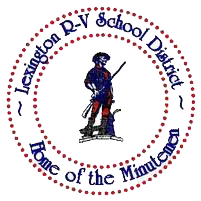School finance can be difficult to understand for those not in the field. Over the next few weeks, my columns will focus on providing a general overview of this topic.
A school budget is an instrument that provides a definite financial policy for direction of the business operations of a school district. It provides a detailed outline of the probable expenditures and the anticipated revenues during a specified period of time. The budget is one of the most important legal documents of a school district. It is not a static document but rather a working document that changes throughout the year, through board approved budget amendments, as actual financial data change.
The following information is needed for budget preparation:
Educational Program
· attainable goals and objectives for the improvement of school programs and pupil achievement
· length of school term
· organizational plan
· salary schedule
· pupil data (enrollment, membership, average daily attendance, pupil transportation, pupil progress charts, follow-up studies of graduates, etc.)
· teaching personnel data (qualifications, experience, and special abilities of each teacher)
· curricular offerings (required courses, elective courses, and cocurricular programs in the areas of music, athletics, speech and dramatics, publications, student council, etc.)
· facility data (available classroom space, adaptability of available classrooms for changes in curriculum, available space for outdoor activities, and available space for special services)
· textbook, equipment, and supply data in regard to present inventory and the amount of these items needed to support the educational programs
· special services in support of educational programs (pupil transportation, health services, food services, etc.)
Cost Estimates
When estimating costs, contracted obligations, such as for certificated personnel, non-certificated personnel, transportation services, school food services, architectural services, building construction, debt service, and payments to other districts must be considered. Furthermore, amounts required to meet departmental budgets, desired additional services, normal increases in costs of established programs, equipment, supplies, and operation and maintenance of the school plant are considered.
Available Revenue
Estimates of available revenue are based upon past experiences of the district. The sources of revenue are carefully evaluated and consideration given to the balances carried forward from the previous year. The district evaluates program and funding changes at the state and federal level, as well as local changes (e.g., changes in local property taxes due to growth within the district, business closures and tax levy elections).
Next week I will provide an overview of school funding sources.

